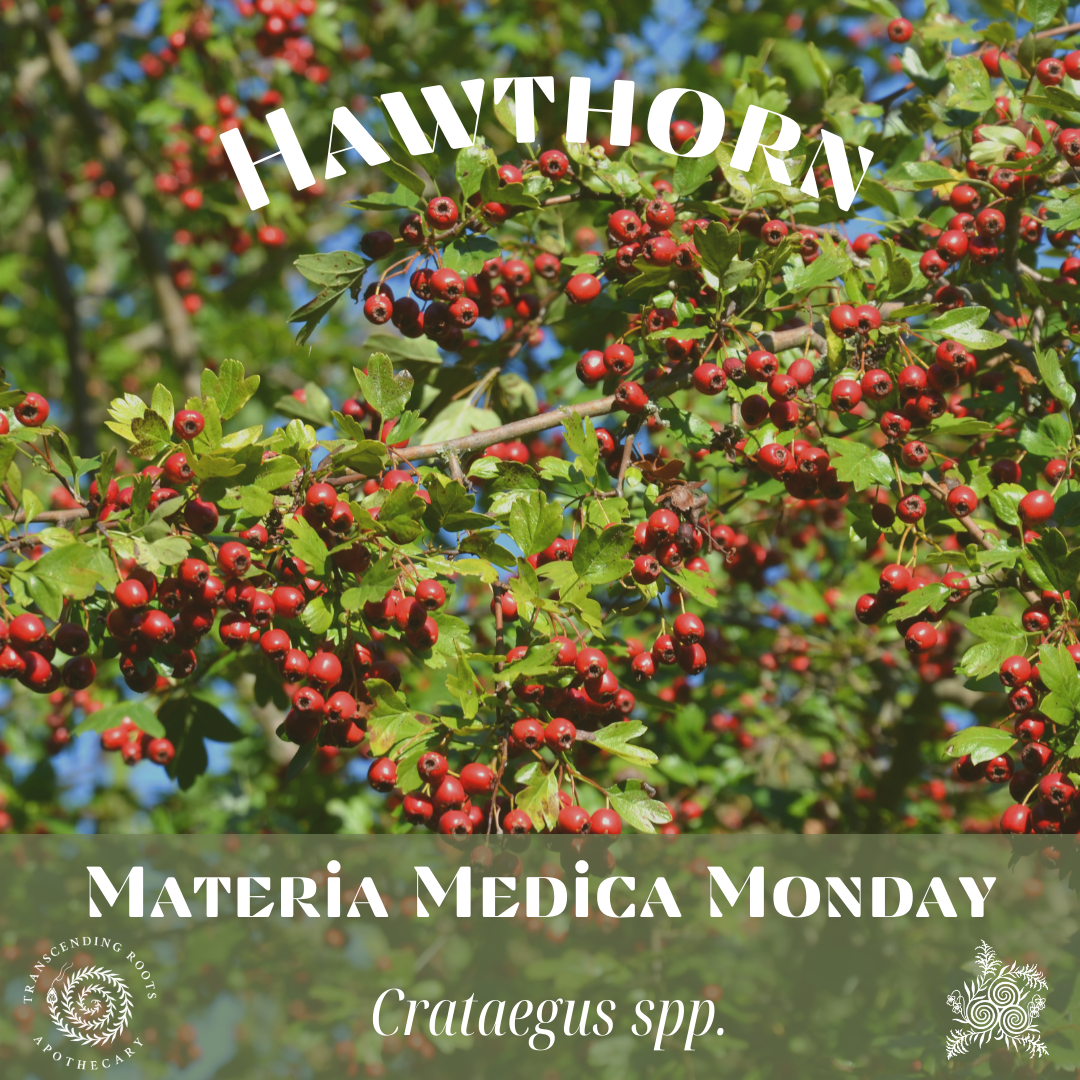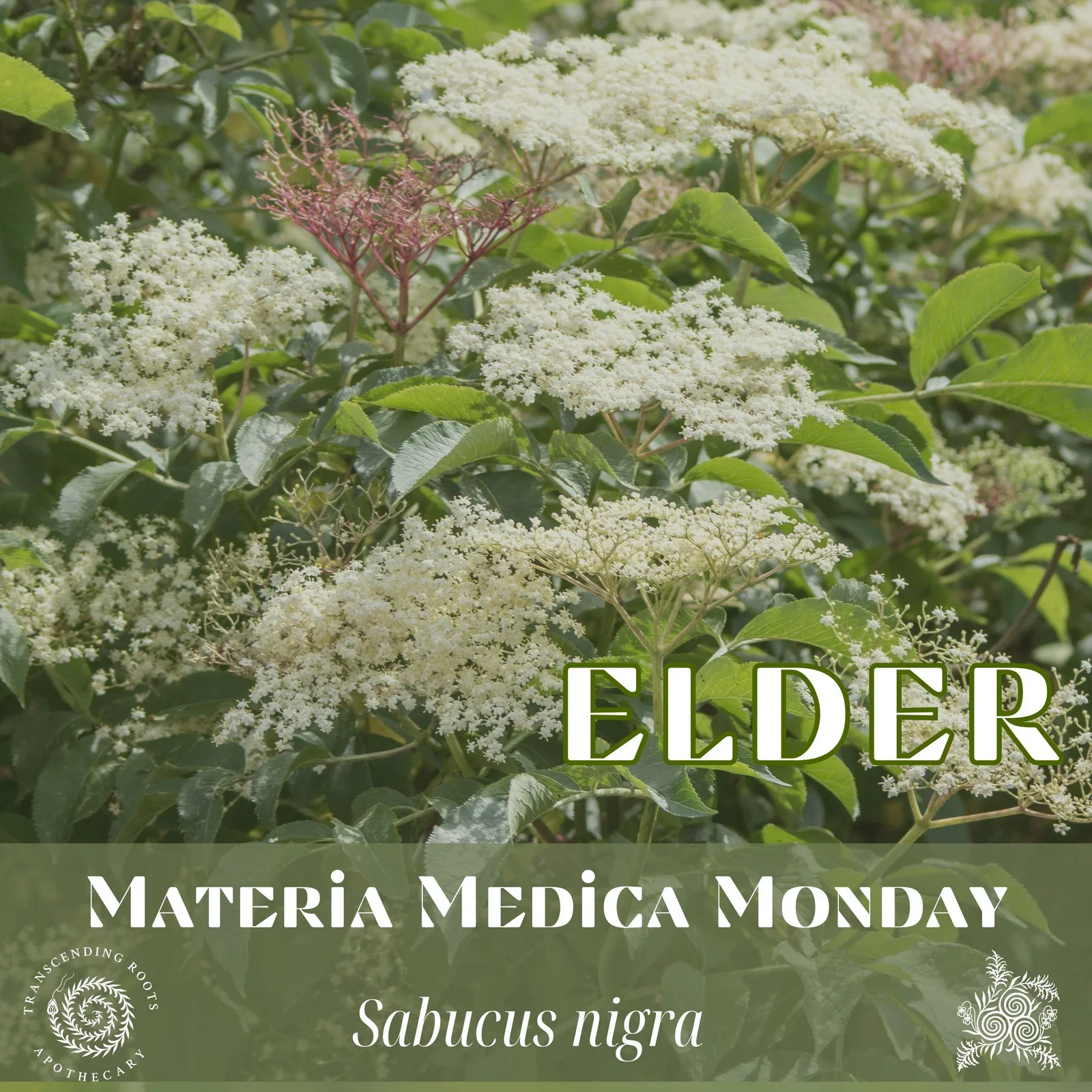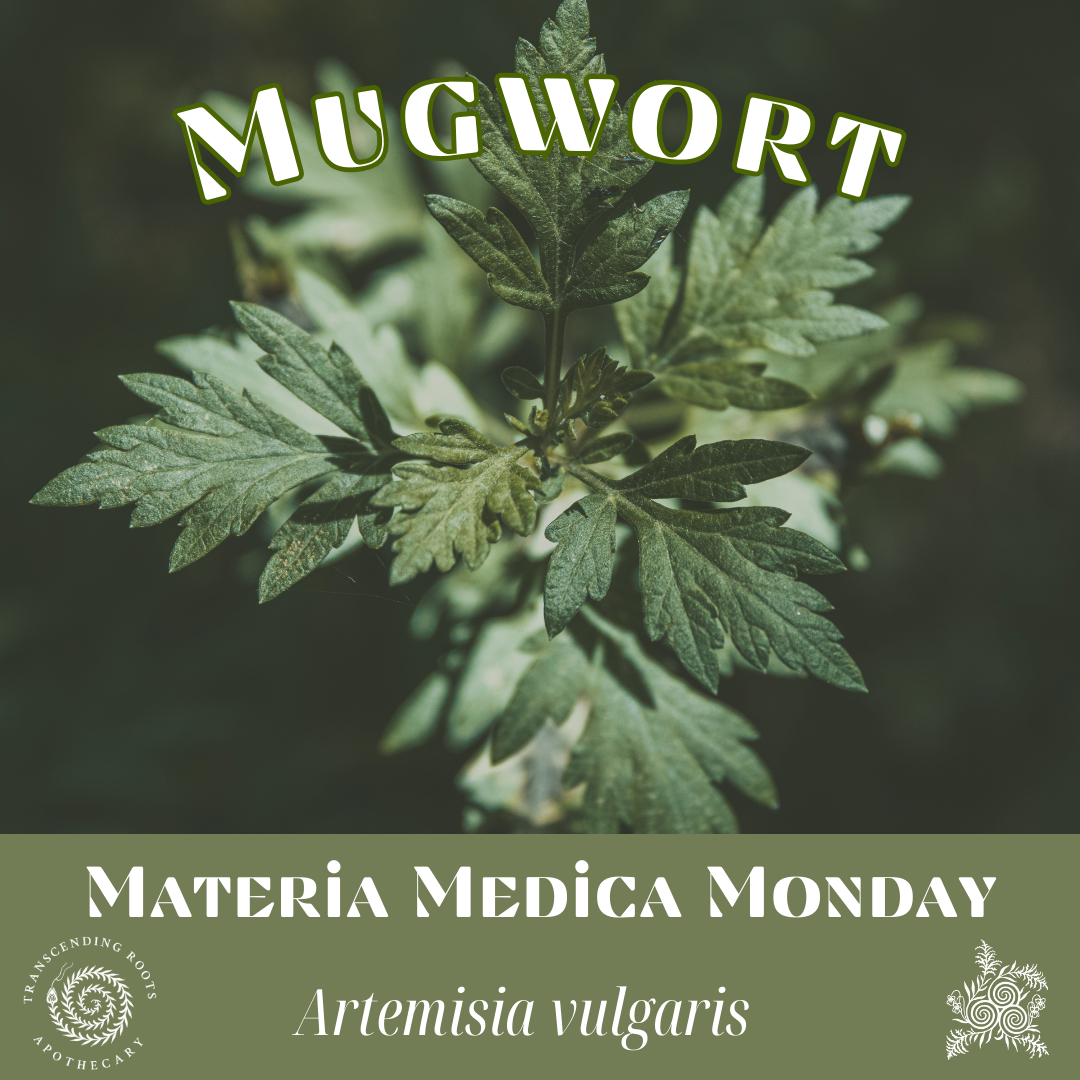The Witching Herbs
Hawthorn
Folklore says that when Hawthorn is planted at the top of a hill near water it creates a portal, or gateway, for the Fae. Isn’t it curious that the Hawthorn tree blooms at Beltane when the Fae return to this realm for the summer, & fruits exactly 6 months later, right around Samhain when the Fae return to the other world.
Hawthorn, a rose family thorned tree or shrub belonging to the Crataegus spp., is also known as Grandmother Rose, & holds ancient stories of magic & medicine. In Celtic tradition, Hawthorn is the gateway between this world & the Otherworld, where not only the Fae move between worlds, as do our ancestors. At Samhain, Hawthorn is an herb of the Spirits & the Dead, & is worked with to communicate with, release & honor the deceased (Hopman, 2019).
This tree is one that made me a true believer in plant communication, as an herbal ‘elder’, Hawthorn holds the wisdom that only our elders can really teach us. I searched for Hawthorn trees in Philly for YEARS, & I would visit these trees I was sure were hawthorns, but could never find the thorns. This tree is sacred & it's said to be very bad luck to mess with a Hawthorn, & there are countless stories of demise from cutting one down, including the fate of the De Lorean auto company. I believe Hawthorn was hiding from me until I was ready to be open to her medicine. It was many years later, as I was building out the apothecary, this grandmother revealed herself to me through my 3 year old daughter, & from then on Hawthorn has never hid from me. She even gifted me with a giant branch of her medicine to work with that hangs in the apothecary to this day.
Hawthorn teaches grace in protection & boundaries, & how to love openly without giving oneself away, to love ourselves, & the medicine in allowing space for grief. Covered in huge thorns, Hawthorn protects her heart, but knows how to also share it to help heal others, & when to protect her’s to heal her own. With species native to Europe, the Americas, North Africa and Asia, I like to think of Hawthorn as a plant spirit that connects us to our One Heart, One Consciousness as Humankind.
As a physical medicine, Hawthorn has a long well studied history of use as a physical heart herb, and is a renowned cardiotonic. There are centuries of documented successful use of Hawthorn for the heart, including quite a few clinical trials in humans over the last few decades. It is supportive for virtually all heart related conditions, including, angina, circulatory issues, high blood pressure, atherosclerosis, myocardial infarction recovery, murmurs, tachycardia, cardiac neuralgias, palpitations, POTS, broken heart syndrome, and congestive heart failure. Outside of heart specific disharmonies, Hawthorn is helpful for protecting the lungs, and as a nervine, helps us with moving through grief, to relieve stress and sadness, and encourages focus and cognitive function for a “disturbed shen”.
Plants are so amazing! And our relationship to them is so powerful.
What is your favorite hawthorn story?
Elder
We are in the descent into the dark months of the year, and the veil between worlds is thinning as the Season of the Witch is upon us and we will find ourselves once again at the beginning, at Samhain. This month we will focus our Materia Medica’s on ‘witching herbs’, and their magical AND medicinal uses.
Elder, Sambucus nigra, is a very beneficial herb for this season, not just for her cold and flu support, but for her deep magic as well. Traditionally, it was actually the flowers of the elder tree that were the primary part of the tree worked with for remedies, and it wasn’t until research over the last 30 years brought the berries into highlight as the influenza remedy.
The berries and the flowers are one of few truly well documented and studied ”anti-viral” herbs, and is an indispensable plant to have in your medicine cabinet for the fall and winter seasons.
Elder is anti-viral, anti-inflammatory and decongesting to the sinuses, a diaphoretic that can help to manage fevers, an expectorant, and a really valuable support for Covid, despite earlier false claims that it was contraindicated.
Elder has so many other uses, from skin conditions to gout and arthritis, but I want to talk about her magic. I came from a generation within I was raised to honor my elders. The elder tree is one of my plant family of ‘elders’ I honor and respect deeply. This wise crone is said to hold the magic of ancient fairy magic, and to be the home of an elder fae named “Elda More”. It is said that if you sleep under her canopy, you will be carried off to the land of the fae in your dreams.
Elder is revered as a magical and sacred plant in many cultures, is used to ward off evil, bring good luck, is a protector of the home. Elder is said to “Offer guidance through the chaos of transformation,” (Bennett, 2014). As her name suggested, Elder is a plant I often work with in Samhain rituals and rituals for ancestral connection, as her medicine and magic can help connect us to the wisdom of OUR elders.
Remembering the Sacred
Rosmarinus officinalis, this mediterranean mint, holds centuries of lore, medicine & magic. Rosemary finds its place in The Witching Herbs’ this month with its long history of magical uses & place in Samhain & ancestral connection ritual.
Magically, rosemary is originally associated with the goddess Venus & Aphrodite, it later became the ‘Rose of Mary’, & is said Rosemary’s flowers became blue when Mary fled to Egypt & took rest under a rosemary bush. Legend holds that she rested her cloak on the bush, & rosemary's white flowers turned blue, & from then on rosemary bloomed with the shade of the cloak of the Goddess Mary. It later became more viewed as a ‘masculine herb’, which is likely associated with more patriarchal shifts in our society, I like to think of rosemary having the ability to transcend the boundaries. It is said rosemary can not grow in a garden where there is a power imbalance in the home, lending to its magical uses for purification, protection, faithfulness, & respect, & has played a part in ceremonies associated with marriage or union, love, luck & death for centuries.
‘Rosemary is for remembrance,’ they say. It’s physical & magical uses are attributed to its associations with memory, reminding us who we are, where we came from, those that came before us, & those still to come. As a part of Samhain rites and ritual, rosemary is worked with to call in these memories, & honor our ancestors. Work with rosemary in Samhain rituals as a tea, offering to the ancestors, or as a smoke in a smudge or sacred fire so the smoke can carry off messages through spirit to your kin. Rosemary is found in @transcendingrootsapothecary Samhain Tea, and in @sacredpathcollective Ancestor Salts and Sacred Waters Spray.
Medicinally, rosemary is warm & dry & worked with as a food medicine, tea, tincture, oil, vinegar or essential oil, & has benefit as a preservative to inhibit spoilage of food, oils or skin care products. Famously known as a memory tonic herb, rosemary improves cognitive function by encouraging cerebral circulation. This action also marks it a popular folk remedy for anything associated with the ‘head’ that needs movement, such as anxiety, depression, headaches, stress, fatigue, sinus congestion, & more. Rosemary is a warming cardiotonic, & moves through the nervous system, & while stimulating blood flow, relaxes & uplifts the spirit, brings joy & restores the nervous system.
As a digestive support, rosemary helps relax the tone of the stomach & can be helpful for digestive upset associated with stress & worry. The volatile oils in rosemary are an antimicrobial ally & can be helpful as home disinfectants, as well as for cold & flu infections & respiratory congestion. Externally, rosemary is useful anywhere we want to increase circulation to, so it can be useful for joint & nerve pain, sprains & wounds. Additionally it is a valuable hair tonic, possibly preventing premature hair loss & strengthening hair follicles.
Into the Wild
Cronewort, Mugwort, Artemisia, Ai Ye - this wise sage has rich global cultural history in communities spanning the northern hemisphere, with ancient uses in ceremony, medicine, & magic.
Artemisia vulgaris, is named for Artemis - the goddess of the hunt, the moon, wildlife, & a protector of women, from childhood through childbirth - all things wild. Artemisia is the crone, the wise woman that connects us to our divine nature, gives us the gift of ancient wisdom, of sight, & enlivens the wild authentic nature of our deepest expression of our truth. In this way, Mugwort is a powerful ally for womb healing work & the divine feminine.
Mugwort makes it into ‘the witching herbs’, as it’s been worked with for magic all over the world, & is sacred to the rites of Samhain.
Magically artemisia is worked with as a ‘first eye’ opener. It is a powerful dreamwork herb, & can be worked with for lucid dreaming, first eye opening, divination, astral projection, protection & ancestral connection. Mugwort is a quite powerful & wild weed you walk by everyday!
Used in Germanic & Celtic cultures in similar ways to sage, it is used to consecrate a ceremonial or ritual space. At Samhain, we may work with Mugwort to hear the voices of our ancestors. Leave them a gift or offering of some of the smudge you burn or tea you drink & you will receive their wisdom.
On a physical level, mugwort is a slightly warm and dry bitter tonic herb that disperses cold & dampness in the digestive system & uterus. It is used for a variety of womens health concerns, including menopausal complaints, prolonged menstrual periods, dysmenorrhea, PMS irritability, miscarriage, post abortion care, & used in TCM for turning breech babies in utero. As a digestive bitter, it is helpful for gas, bloating, stomach aches & diarrhea. The minerals can strengthen bones & joints, can be used topically for bruises & arthritis, can be a component in cough formulas, & can dispel bad dreams.
With such an array of uses & ability to grow EVERYWHERE, we can see why it was once referred to as “The Mother of All Herbs”. Enjoy as a tea, tincture, smoke, smudge, oil, or hydrosol. What are your favorite ways to work with it?




